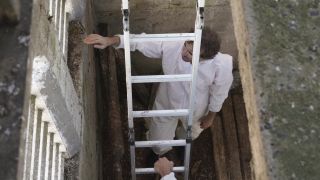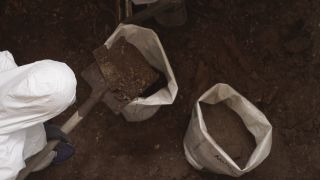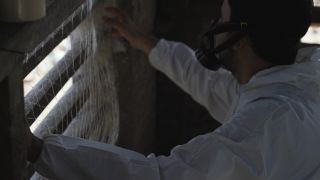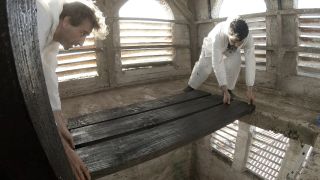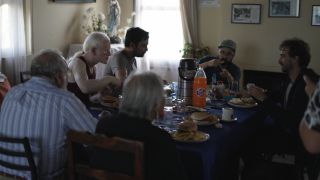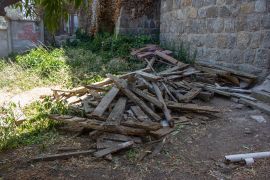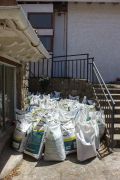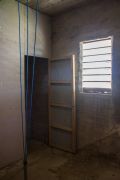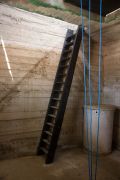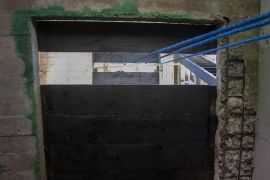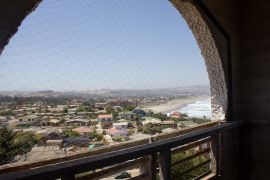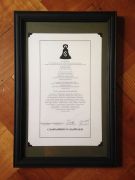Restoration of the bell tower
On December 24, 2018, the Campaneros de Santiago raised the funds (detailed below) to be able to restore the bell tower. The work was carried out during the second half of January, presenting the bells with a celebration ringing and on Thursday, January 23 a death knell for the first anniversary of Nicanor Parra Sandoval's death.
For images of the process and the result of the restoration see the bottom of this page.
Celebration ringing (exterior and interior)
Death knell for Nicanor Parra Sandoval (inside the bell tower)
Death knell forNicanor Parra Sandoval (next to his house)
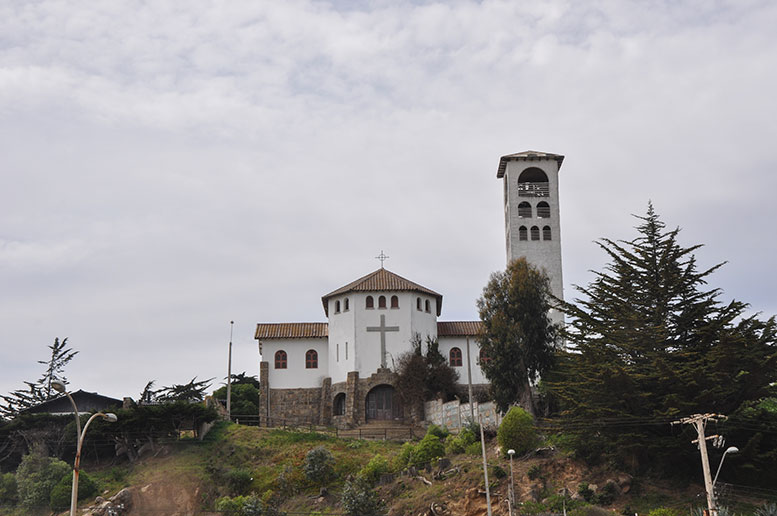
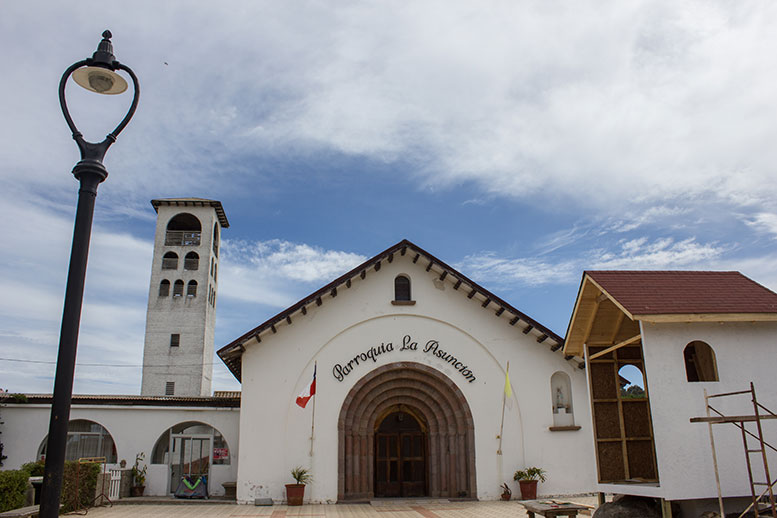 Abbreviated story
Abbreviated story
The bell tower of the Parish Church of Our Lady of the Assumption in Las Cruces has three bells cast in 1947 in Chile by the Roman immigrant Romulo Tonti. The current state of the bell tower does not grant access to them and the sustained deterioration, due to weather and the accumulation of pigeon droppings, presents a permanent risk to the integrity of the bells. That is why the Campaneros De Santiago* summon the civilian population to raise the necessary funds for its restoration, scheduled for December 2018 and January 2019, which will be presented with a death knell on the occasion of the First anniversary of the death of the poet Nicanor Parra Sandoval, on Wednesday, January 23.
To make a contribution refer to the end of this page.
* The “Campaneros de Santiago” is a group of bell ringers reviving local traditional bell ringing based on the ecclesiastical ordinances that regulated bell ringing during colonial and republican Santiago. “Campaneros de Santiago” began in october 2012 based on the bell research conducted by Eduardo Sato, subsequently published as “Con mi voz sonora, campanas y toques de campana en la Catedral y otros templos históricos de Santiago (1789-1899)” [Ediciones UAH, 2018], and is currently conformed by Eduardo Sato, Sebastián Jatz, Tomás Brantmayer and Nicolás Sandoval.
Circumstances
On Saturday, September 8 2018, I had the honor of ringing these bells on the occasion of Nicanor Parra's 104th birthday, while the community advanced in procession from the small beach to his grave in his home.
The death knell is normally performed with three bells, in "doubles" or all ringing simultaneously, solemnly and with silences in between.
We requested to use of the bells only an hour before and thanks to the kindness and open disposition of those who welcomed us in the Parish we were able to carry them out. However, despite having exactly three bells, we found that it was impossible to access them directly and that the ropes that could be used from the lowest level excluded one of the bells, so it had to be done with only two bells.
Seeing that the tower doesn’t have structural damage but that its stairs and openings are in very bad condition, we have decided to carry out a restoration of the bell tower, so that we can return the sound of these three bells to the coastal town of Las Cruces and be able to perform a correct death knell next Wednesday, January 23, 2019, for the first anniversary of the poet's death.
For this purpose, we have climbed to the top of the tower to make a report of its infrastructure and assets and to project its restoration, which is detailed below.
Bells
The three bells were cast in 1947 by Roman immigrant Romulo Tonti and carry inscriptions that baptize them with his name, that of his wife and daughter: Romula, Josefina and Ana Mónica. They also bear the casting year and its destination, the Parish Church of Las Cruces, having been made specifically for this town and as far as we know, the only bells that he cast.
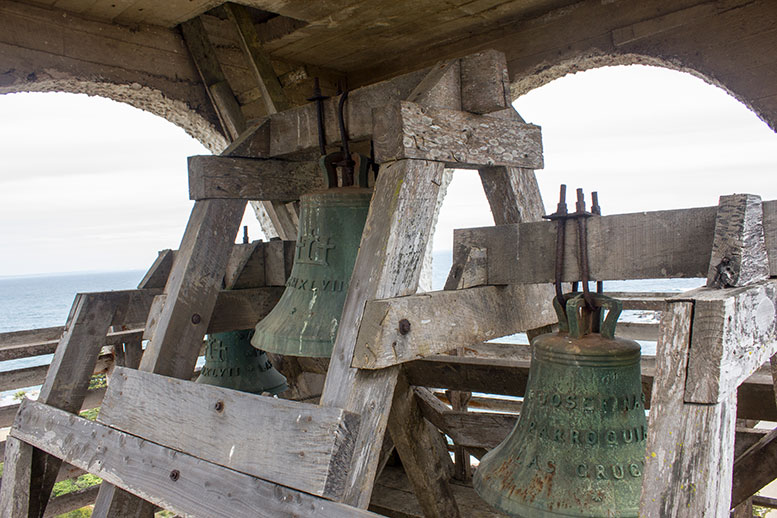
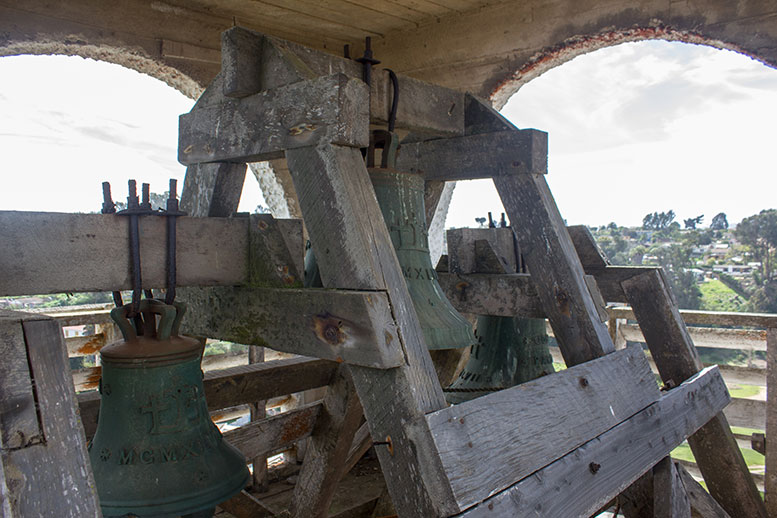
The Ana Mónica (south)
Diameter 44 cm. - Body Height 35 cm. - Handles Height 10 cm. – Approx. Weight 49 kg
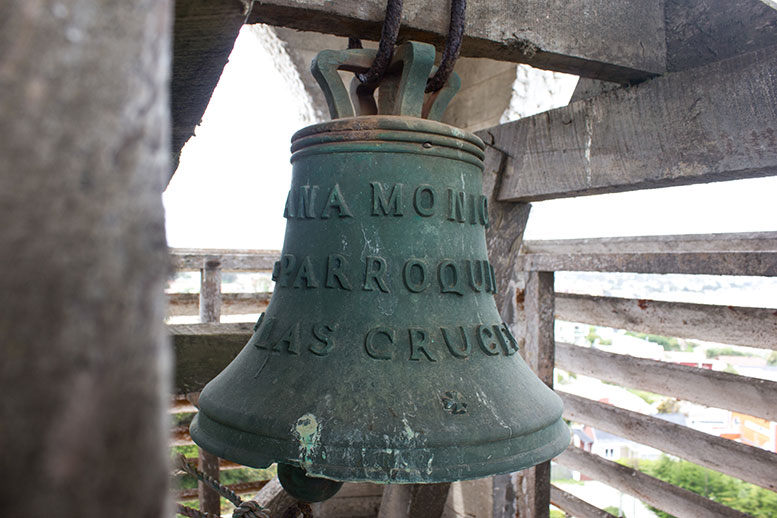
The Romula (center)
Diameter 69 cm. - Body Height 55 cm. - Handles Height 12 cm. - Approx. Weight 190 kg
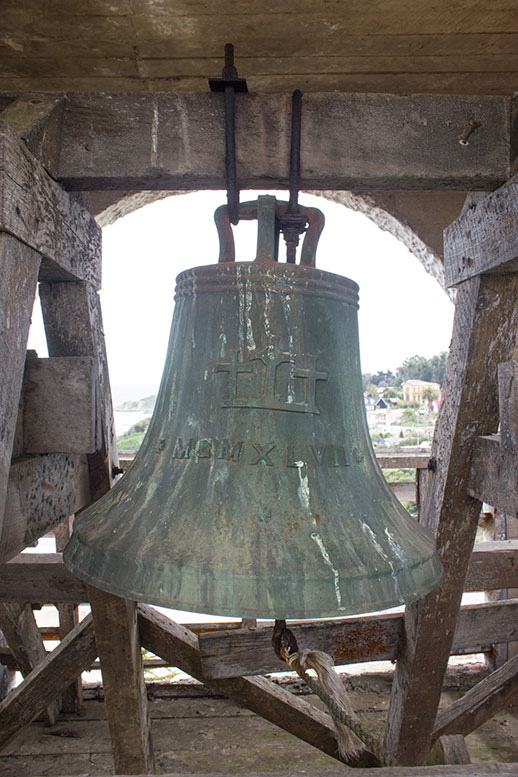
The Josefina (north)
Diameter 58 cm. - Body Height 43 cm. - Handles Height 11 cm. – Approx. Weight 112 kg
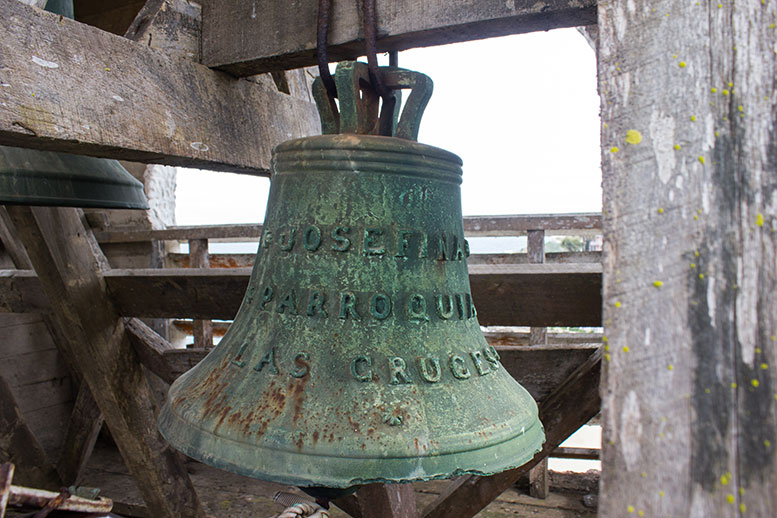
Tonti arrived in Chile in 1910 and since 1917 he was Professor of Artistic Foundry at the School of Applied Arts of the University of Chile and the School of Fine Arts, being the first lost wax smelter in Chile and the teacher of numerous artists who have worked with bronze ever since. In addition, he had his own artistic foundry in Avda. Seminario in the capital and made many and well-known works found today in different cities in the country.
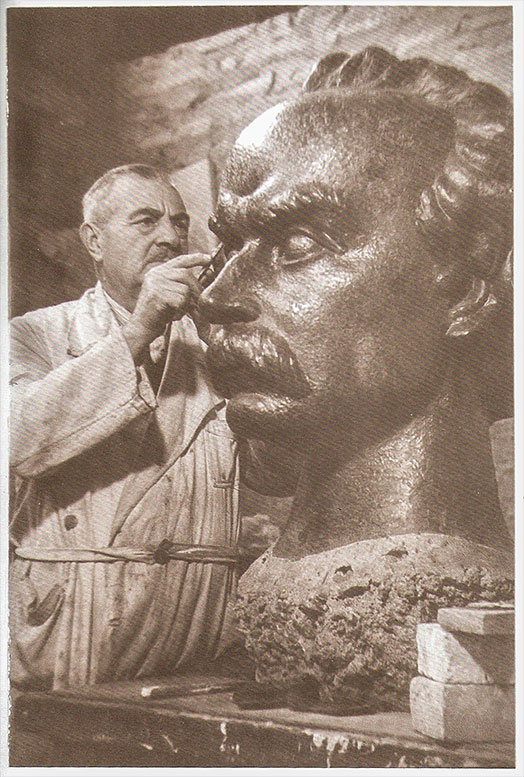
Selection of works carried out at his foundry
Manuel Rodríguez Monument, by Blanca Merino, located at the beginning of Bustamante Park, Santiago.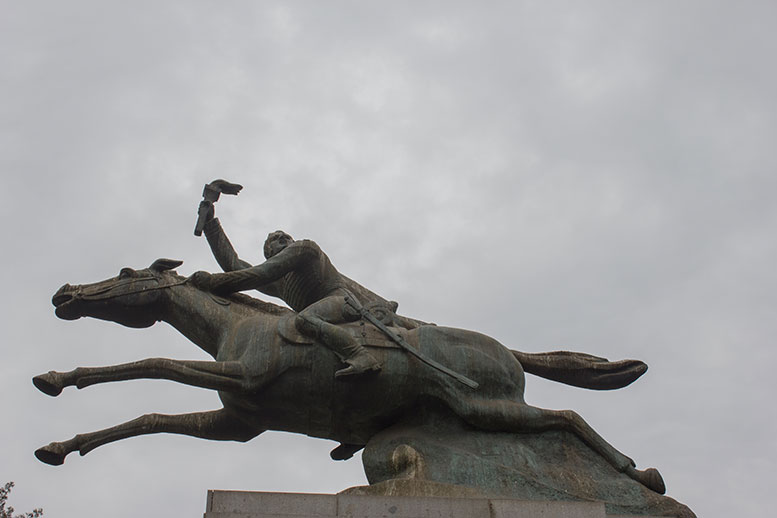
The Genius of Freedom of the Italian Colony Monument, designed by Roberto Negri, located in Plaza Italia, Santiago.
José Manuel Balmaceda Monument, by Samuel Román, located at the beginning of Balmaceda Park, Santiago.
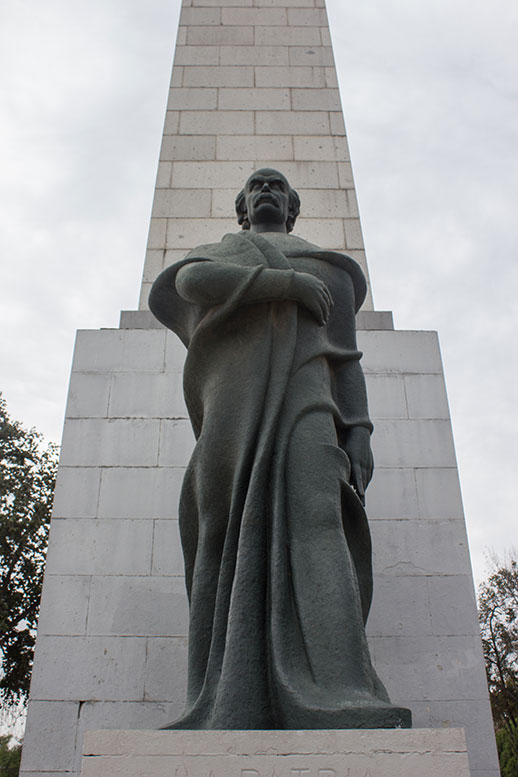
Monumento a José Victorino Lastarria, obra de Raúl Vargas, ubicada a los pies del Cerro Santa Lucía, Santiago.
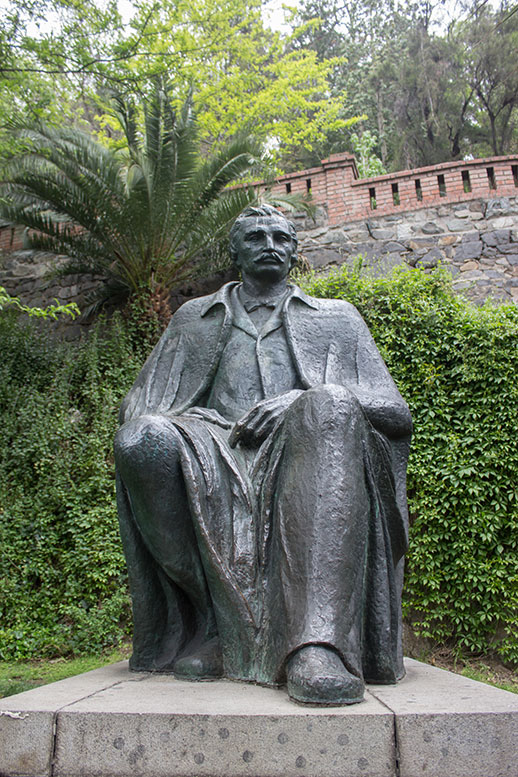
Bell tower
The bell tower, built in reinforced concrete, is located on the south side of the altar and consists of 6 floors connected by uncoated pine wood stairs, topped in an oak structure that supports the 3 bells. The 4th, 5th and 6th floors, have 12, 8 and 4 windows respectively, partially covered with sunshades in pinewood. These same floors have a central square opening, partially covered with pine wood.
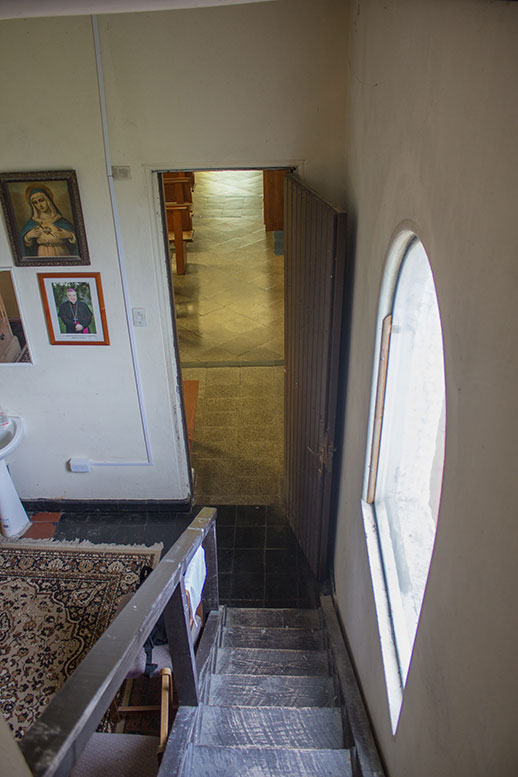 1st floor
1st floor
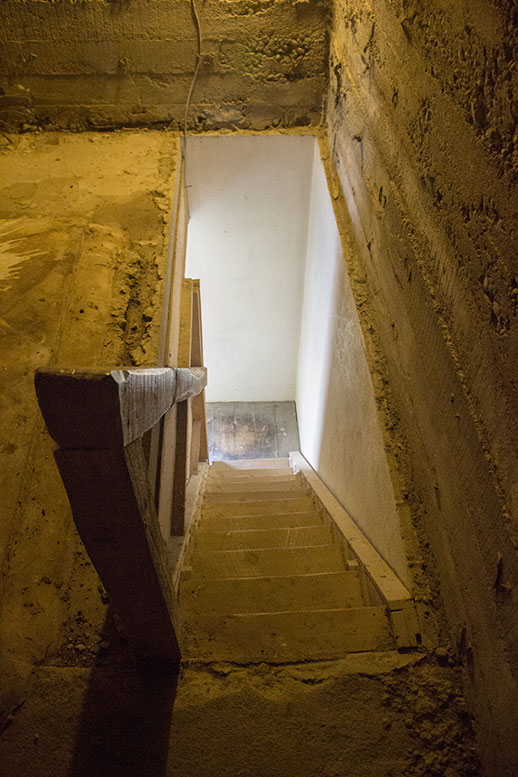 Staircase to the 2nd floor
Staircase to the 2nd floor
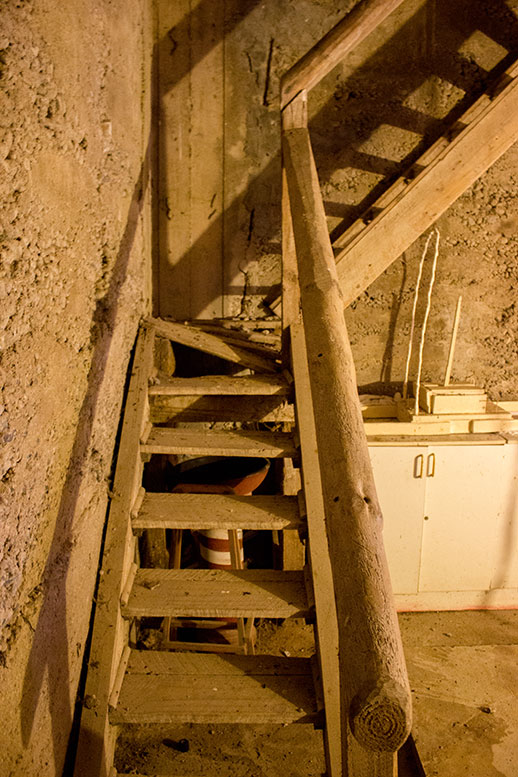 Staircase to the 3rd floor
Staircase to the 3rd floor
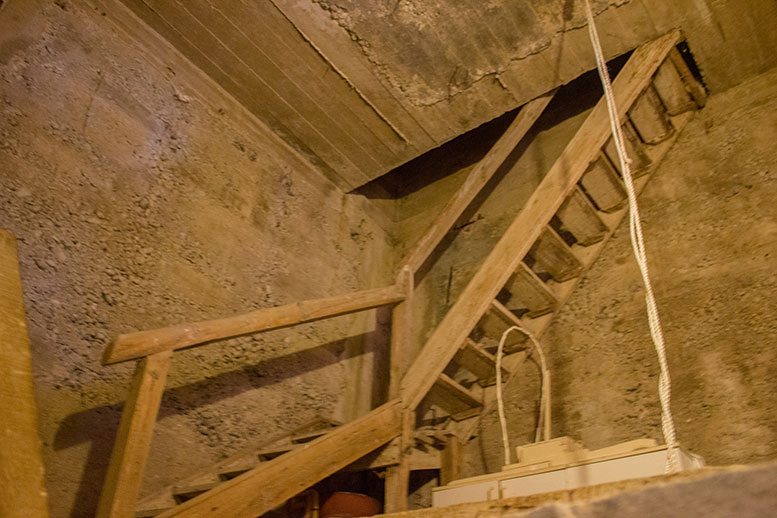 Staircase to the 3rd floor
Staircase to the 3rd floor
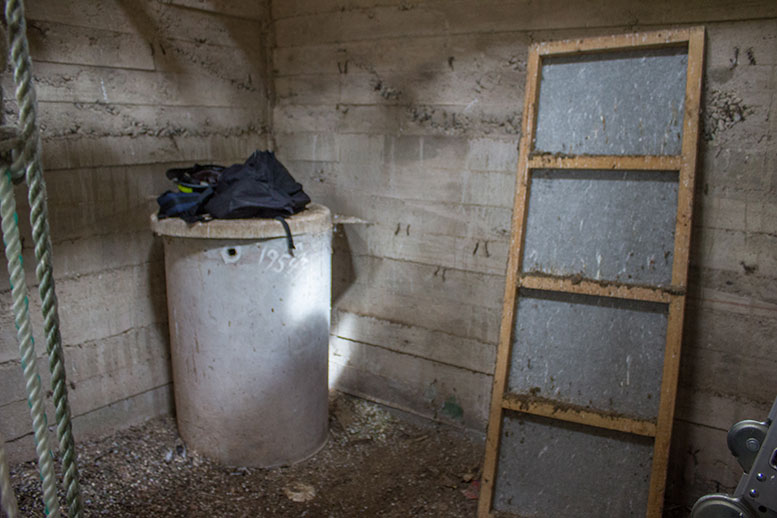 3rd floor
3rd floor
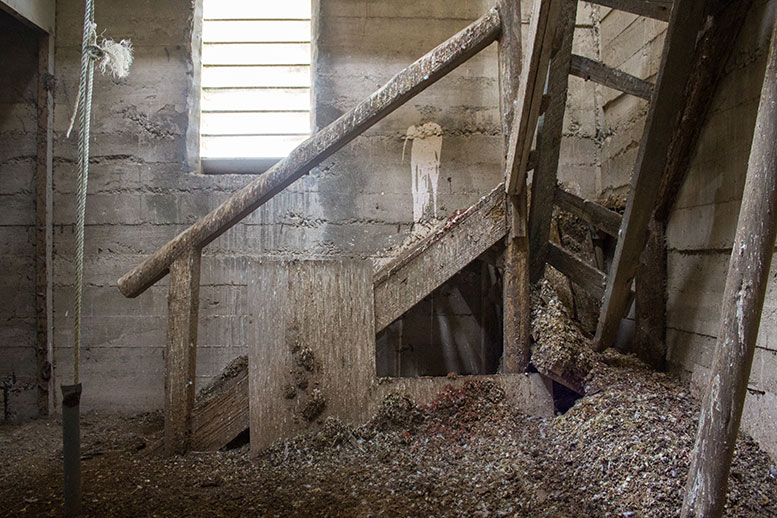 3rd floor
3rd floor
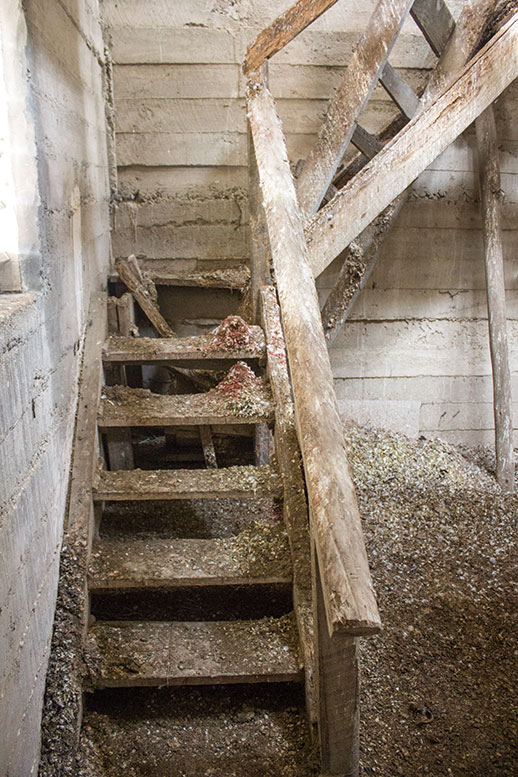 Staircase to the 4th floor
Staircase to the 4th floor
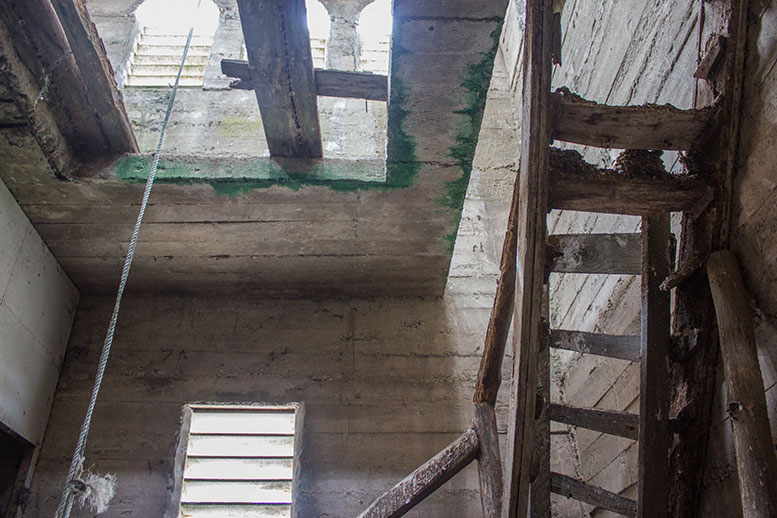 Staircase to the 4th floor and 5th floor opening
Staircase to the 4th floor and 5th floor opening
 3rd floor opening
3rd floor opening
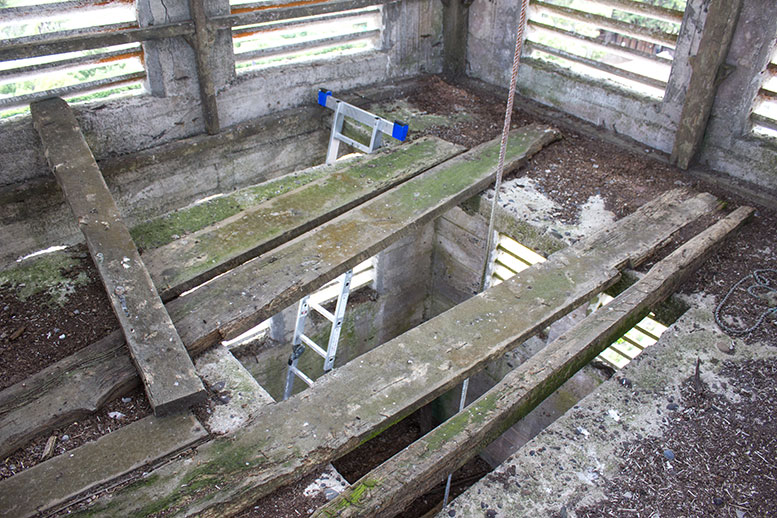 4th floor
4th floor
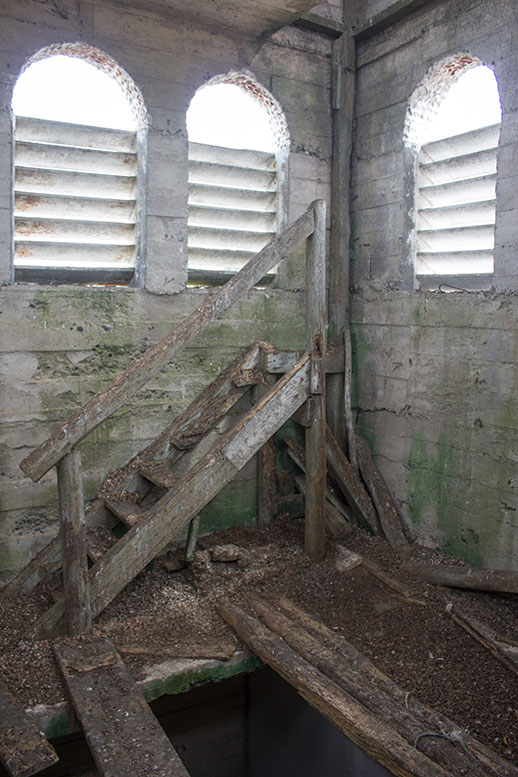 4th floor opening and staircase
4th floor opening and staircase
 5th floor
5th floor
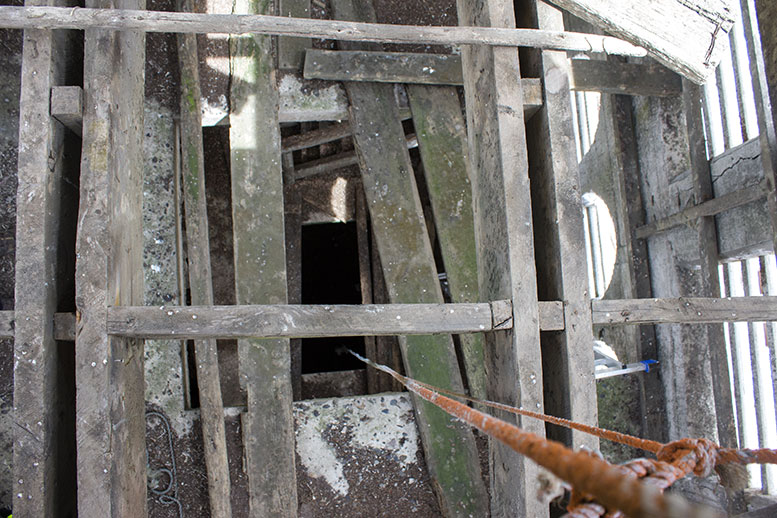 6th floor
6th floor
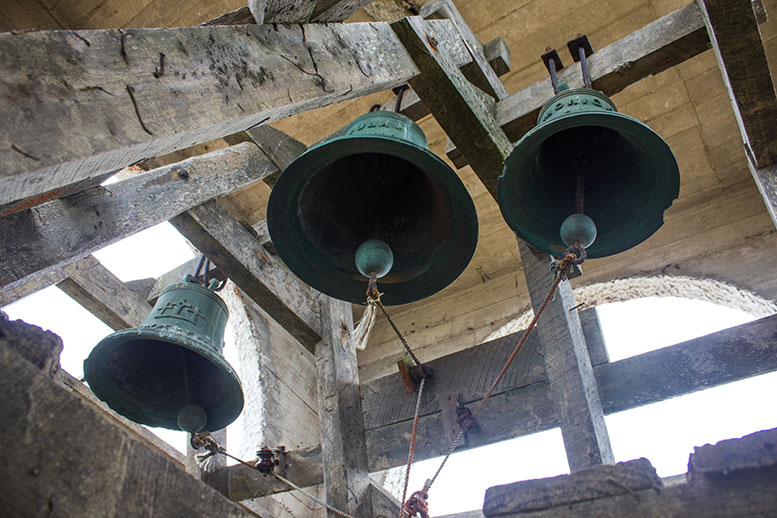 Bells
Bells
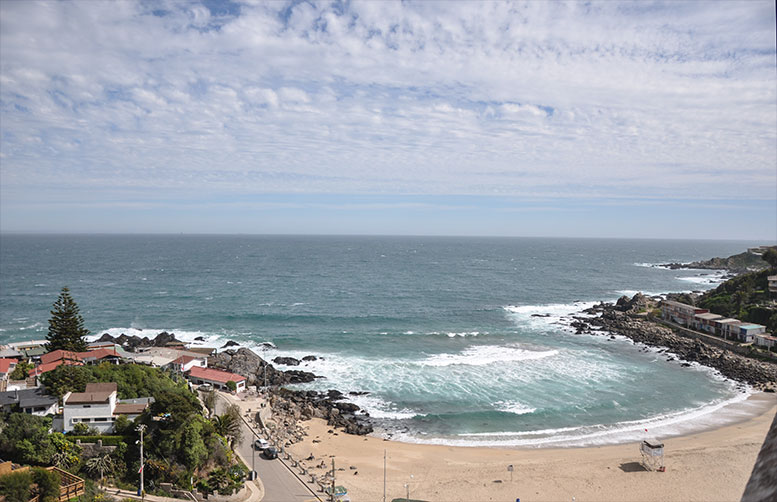 West view
West view
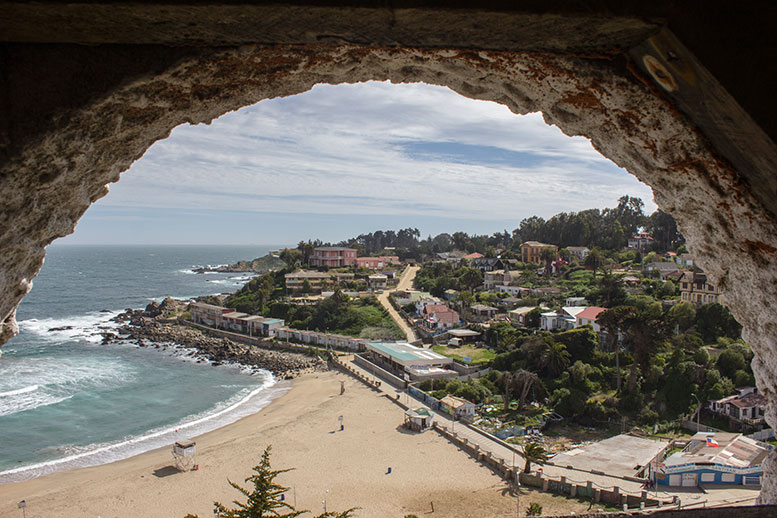 Northwest view
Northwest view
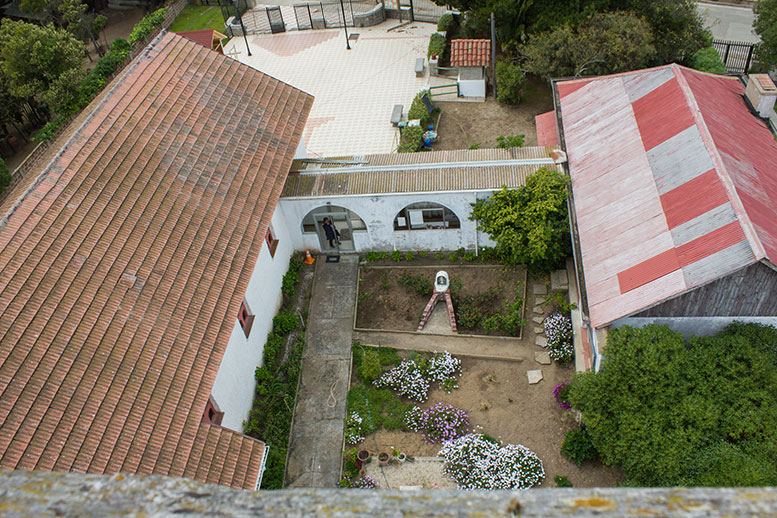 View of the parish garden
View of the parish garden
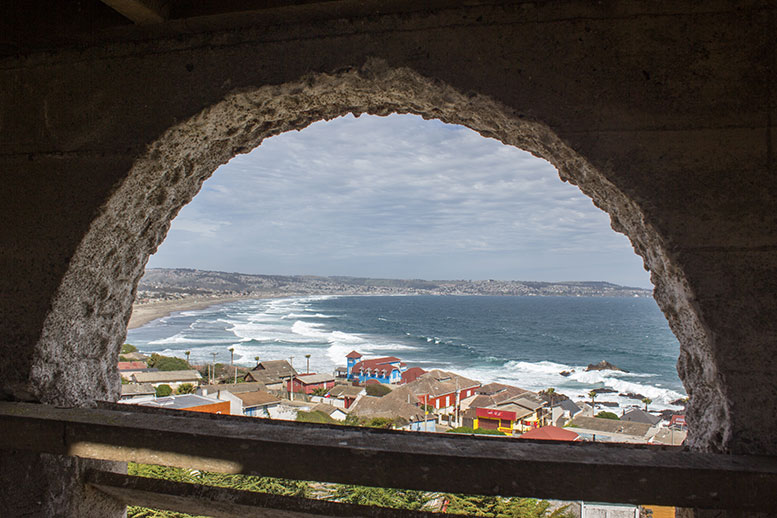 Southeast view
Southeast view
Restoration
Given that the structure of the tower is in good condition, as well as the oak structure that supports the bells, the restoration will cover the aspects detailed below:
1. General cleaning
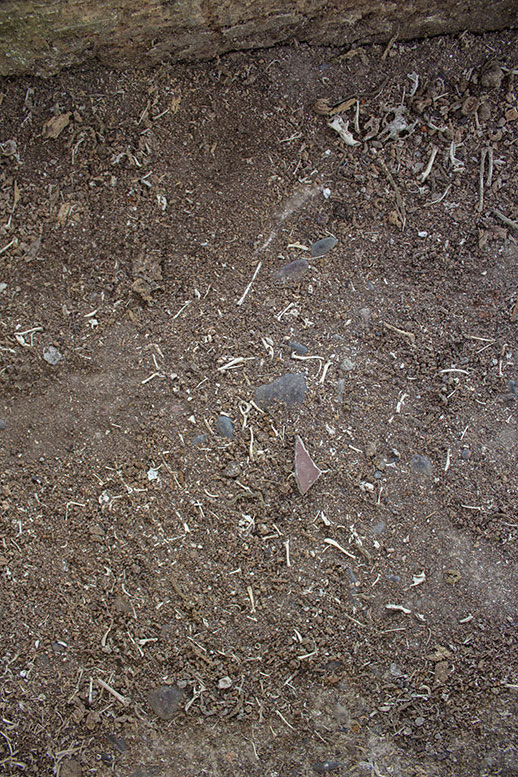 Pigeon droppings and skeletal remains
Pigeon droppings and skeletal remains
The windows of the tower, being partially covered, have allowed the constant entry of pigeons into its interior which has resulted in a considerable amount of pigeon droppings, which given their high concentrations of uric acid and phosphoric acid have ended up eroding and destroying the stairs, being at the same time an imminent risk to the concrete structure, as well as a constant health risk for humans.
A team formed by the Campaneros De Santiago (Eduardo Sato, Sebastián Jatz, Tomás Brantmayer and Nicolás Sandoval) will remove the pigeon droppings and other elements, cleaning the surfaces to stop the deterioration sustained over time.
2. Stairs
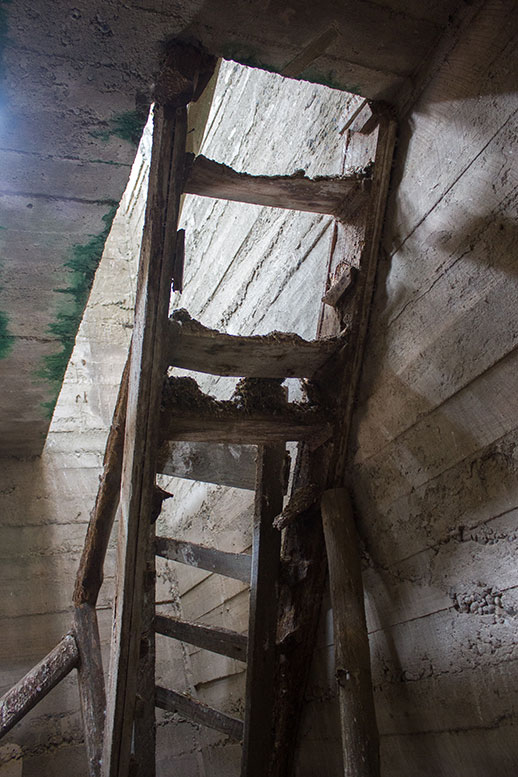 3rd floor staircase
3rd floor staircase
Removal of damaged wood and construction of stairs in pine wood covered in tar to guarantee its resistance to environmental conditions, connecting the 4th, 5th and 6th floors. Additionally, repairing some steps of the existing stairs between the 2nd and 3rd floor.
3. Window protection
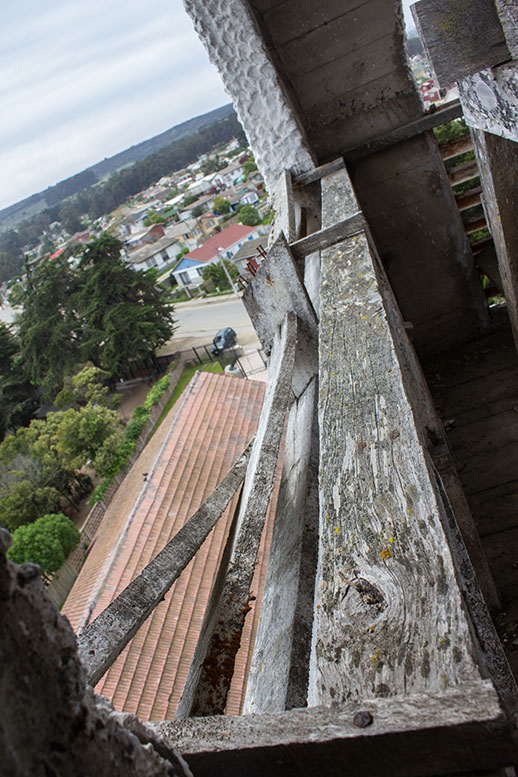 Damaged lattice
Damaged lattice
 5th floor windows
5th floor windows
Installation of nylon mesh with pine frames covered in tar attached to the wall, in order to prevent the entrance of pigeons to the tower. Repair of 2 missing lattices in pine wood.
4. Central openings
 4th floor central opening
4th floor central opening
Installation of 2 semi-open platforms in pine wood covered in tar for the 4th and 5th floor of the tower.
5. Fastening of the bells
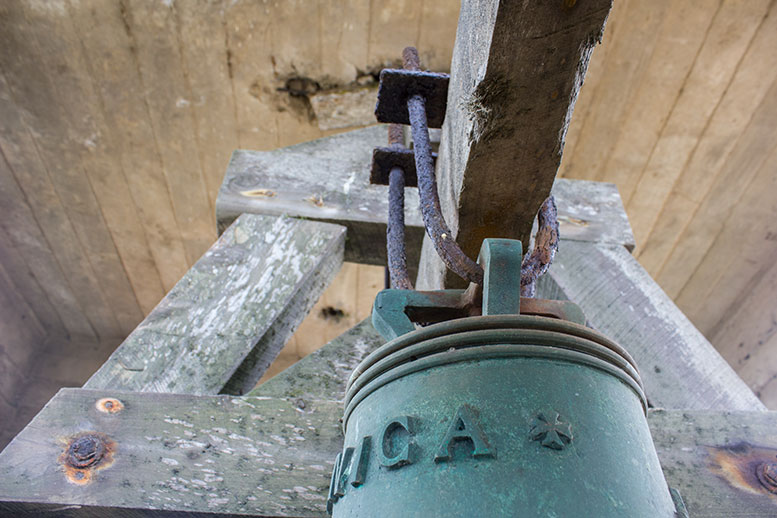 Ana Mónica fastening
Ana Mónica fastening
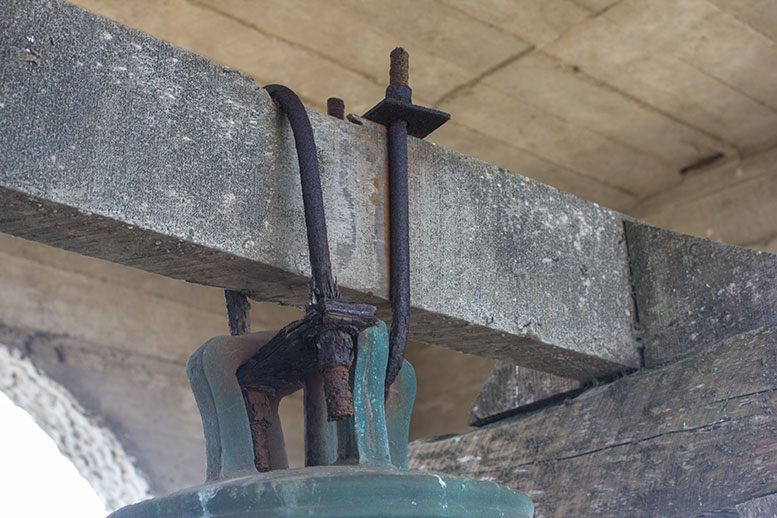 Josefina fastening
Josefina fastening
The bells are attached to the oak structure with iron shackles that are in very poor condition and could collapse at any time due to corrosion. Galvanized steel chains will be installed as a safety measure and subsequent fastening once the shackles have collapsed.
6. Change of ropes
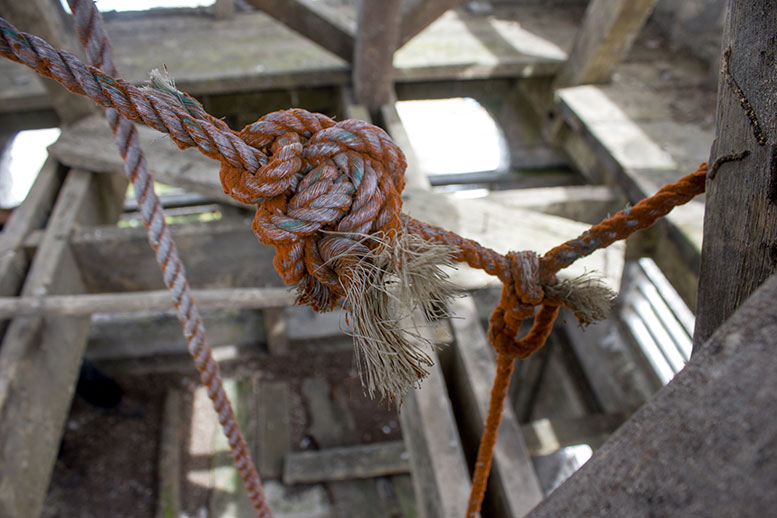
The ropes show signs of wear and accumulation of pollen and other sediments so they will be replaced by new ropes. In addition, the union system of the three bells will be installed correctly so that they can be rang from the base of the tower.
7. Access door
The access door to the first floor of the tower is in poor condition due to the corrosive effect of the pigeon droppings so it will be replaced by a new door.
Quotation
According to the points mentioned above, a quotation (Sodimac) of the following materials and costs was made:
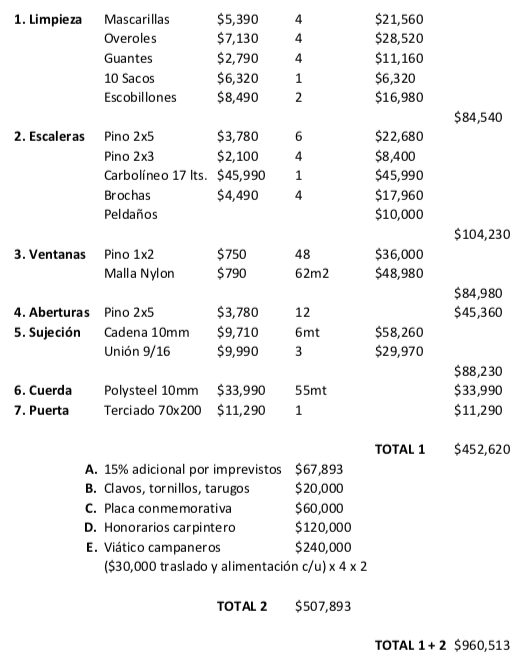
Campaign
The intention of this restoration project is to recover the sound of three objects of high historical and territorial value in order to carry out appropriate ringing throughout the year and particularly to commemorate the poet Nicanor Parra on the dates of his entry and exit of this world.
In order to carry out this goal, we call on the civilian population to raise the necessary funds, so that this recovery does not depend on State, municipal or ecclesiastical funds, establishing a recognition and movement by individuals who appreciate and have the will to ensure the preservation of our heritage, understood as collective assets that we can jointly protect in parallel to institutions.
Each of the contributors will be recognized on a commemorative plaque that will be installed inside the tower, giving an account of the work carried out and the forces summoned for its completion. We receive contributions starting from five thousand Chilean pesos to the following bank account:
Sebastián Jatz Rawicz Banco Estado Cuenta RUT (Vista) 10598958 RUT 10.598.958-k pezgato@gmail.com
Please indicate as subject "Bell Tower Restoration".
In this same site, records of the work carried out will be published in addition to a detailed and documented accountability of the amounts collected and used in the restoration process, with a transparent and good faith procedure.
We appreciate your attention and contribution.
Sebastián Jatz Rawicz
Campanero de Santiago


